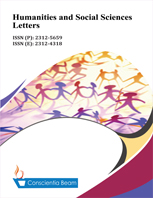Employee Motivation and Industrial Output in Nigeria
DOI:
https://doi.org/10.18488/journal.73.2021.91.24.33Abstract
This study applied the autoregressive distribution lag (ARDL) econometric approach to examine the long-run effect of employee motivation on industrial output in Nigeria. Data used for the study was sourced from the World Development Indicators (WDI) of the World Bank from 1981 to 2018. Industrial output was proxied by industrial value added (annual % growth) and was used as the dependent variable, while the independent variable is motivation, which was proxied by wage and salaried workers, total (% of total employment) and was modelled on the ILO estimate. Results from the analysis showed that employee motivation is statistically significant and positive in determining the level of industrial output in Nigeria. This result implies that an increase in the level of employee motivation has the potential to increase industrial output by 98%. Therefore, based on the findings, the study recommends that employees should be motivated through regular payment, increased wages and salaries and other bonuses (fringe benefits) to increase industrial productivity.

